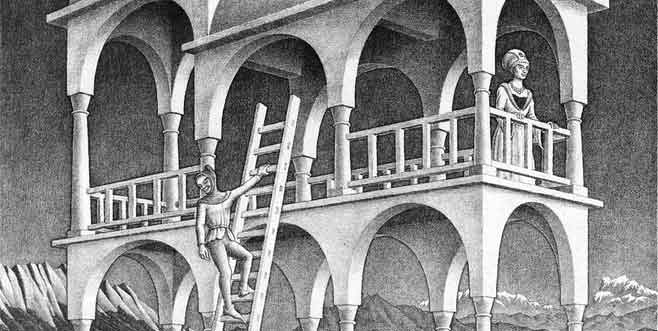As it’s almost 2017 as I write this, I did a little bit of thinking about the year. I can sometimes be accused of being relentlessly positive (maybe too positive sometimes) – but 2016 has been a great year for me, UXA at the BBC and the team I’m a part of.
Information architecture at the BBC has a rich and wonderful history. We publish around 1,500 URLs everyday. We’ve been online since 1997. Building a site that made sense as the web grew has been a challenge. Creating an architecture that evolves with that growth, choreographing growth and development which doesn’t accrue too much debt and responding to organisational changes alongside technological ones is something we’ve acknowledged, taken on and will continue to be faced with.
GEL, as the fundamental building blocks we build our places out of is becoming more “architected”. I’ve always been interested in the careful balancing act that you need to perform to enable resilience, connectivity, coherence, efficiency and still leave space for innovation.
UXAs at the BBC bring clarity to muddles of complexity. At our best we build trust and confidence by clarifying the complex and calmly facing the utterly confusing. When we’re embedded in “products” this is exactly the sort of thing we can do – exert influence and nudge the product architecture. But because we’re a team of specialists we can also work together to do the harder and more valuable work of architecting networked systems.
Systems architecture and designing connected services that reflect how our audience make sense of the world, rather than how we’ve arranged the parts internally are exciting challenges – and exactly what information architecture is for. In 2017 I’m going to talking more about what I think IA is for. My first attempt at this is talking about Escher.
The talks I delivered at World IA Day 2015, IA Summit and UX New Zealand shared a common section where I talked a little about the reliance in the past on taxonomic hierarchy – building structures that tended to flow from the general to the specific. That’s a theme I started talking about in 2014 – at Euro IA. This year I used the phrase:
The places I make are much more like Hogwarts than Hampton Court.
The image was supposed to suggest a structure in flux, responding to the movement of actors through it – shifting affordances and perspectives. But my love of alliteration probably complicated things – maybe Hampton Court is more known for it’s maze than the stately, fixed architecture of the house the maze belongs to.
I’m now (caught in a tangle of post rationalisation) happily embracing both images. Maybe they’re both helpful when we think about information architecture. I think perhaps my point about the taxonomic structures of the past is that the actors that move through them are like people in a maze – and one with multiple centres and entrances. Although you might be able to move in more than one direction, generally we optimised for the movement from edge to centre. My point now is that the mazes are more magical – they’re in flux.
Escher’s images are built on foundations of logic, but they embrace the idea that a single structure might support multiple perspectives. This is a theme I’ll be developing in the work I do and the things I say in 2017.

In a world where the structures we support move around; where actors with multiple perspectives move in and out and through them; where systems are re-architected, features and functionality de-scoped and MVP’d; and where pivoting is just as likely in roadmaps as it is in “user experiences,” we face exciting challenges.
In 2017 I’m going to be talking about how we do that and how architecture – describing and deciding about the arrangement of things – can and should result in something even greater than the sum of the parts.

Leave a Reply